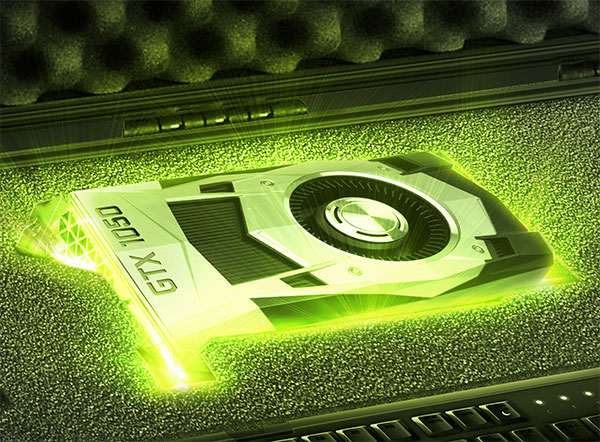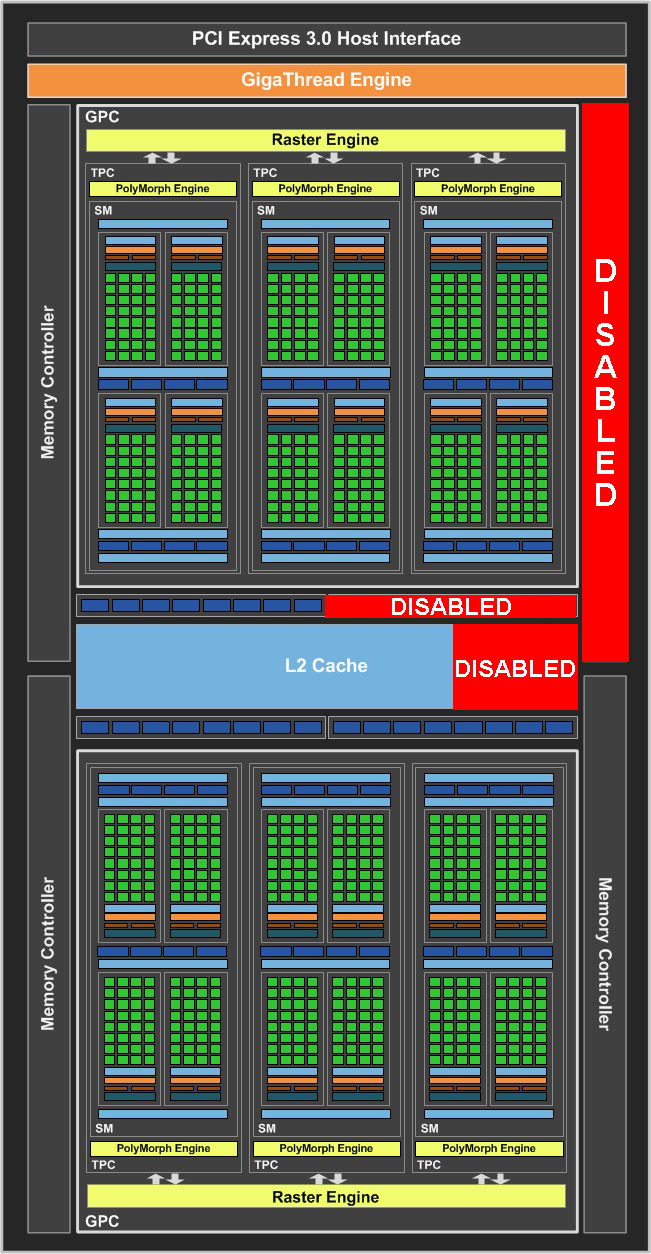Tom's Hardware Verdict
Nvidia's GeForce GTX 1050 3GB is mostly an upgrade over the 2GB version, offering reasonable performance at 1920x1080 (so long as you're willing to dial back quality). Unfortunately, there aren't any examples of the 3GB board available to buy yet, so it's hard to know how its price will compare. Regardless, the graphics card market remains inflated, dampening our enthusiasm for this card's potential.
Pros
- +
Generally faster than GeForce GTX 1050 2GB (and Radeon RX 560)
- +
Board power rating does not require auxiliary power
- +
Playable 1080p performance at reduced detail settings
Cons
- -
Trails GeForce GTX 1050 2GB in certain workloads
- -
Current on PCIe slot's 12V rails can exceed PCI-SIG specification
- -
Prices on mainstream graphics cards are still too high
Why you can trust Tom's Hardware
GeForce GTX 1050 3GB Graphics Card Review
Nvidia’s mainstream graphics card lineup is already dense. And yet, with its GeForce GTX 1050 3GB, the company attempts to slip another model between GeForce GTX 1050 2GB and GeForce GTX 1050 Ti 4GB. Back in 2016, those two cards started a mere $30 apart. So how the heck does Nvidia see room for additional segmentation?
According to our sources, it really doesn’t. Slowly but surely, GeForce GTX 1050 3GB cards will start replacing 2GB boards, particularly as the 512MB memory chips used on those 2GB implementations become harder to source. A 3GB version gives Nvidia's partners another option for satisfying demand using higher-density GDDR5. In turn, we’re told that GeForce GTX 1050 2GB and 3GB should be priced similarly.
Surprisingly, our benchmarks do show GeForce GTX 1050 3GB trailing the 2GB model in a couple of games. More often, though, it’s a fair bit faster. That’s why you won’t catch us gnashing our teeth over Nvidia’s naming strategy this time around, even though GeForce GTX 1050 3GB is based on a distinctly unique GPU configuration. We want clarity when an inferior product may be confused for something better. Here, GeForce GTX 1050 3GB is at least comparable to the family’s lowest-end member and deserving of its designator.
Meet GeForce GTX 1050 3GB
Notice that you haven’t seen any GeForce GTX 1050 3GB cards for sale yet. Launch plans are still in a state of flux, it seems, and our test sample’s manufacturer is camera shy as a result. For now, we’ll have to do without any glamuor shots.
Just imagine a small PCB with a GP107-301 processor, flanked by four memory emplacements, three of which are populated by 1GB GDDR5 packages. In comparison, GeForce GTX 1050 2GB has its emplacements occupied by four lower-density chips, while GeForce GTX 1050 Ti 4GB employs a quartet of 8Gb packages. All three configurations offer 7 Gb/s data rates.
The display output configuration is similar to what we’ve seen from other GeForce GTX 1050 models: there’s one DisplayPort 1.4-capable connector, HDMI 2.0b, and a dual-link DVI port.
Really, though, what makes the GeForce GTX 1050 3GB unique is its GPU. Nvidia uses a GP107 with all six of its available Streaming Multiprocessors (SMs) enabled. Each SM features 128 single-precision CUDA cores and eight texture units, totaling 768 CUDA cores and 48 texture units across the processor (similar to the front-end of a GeForce GTX 1050 Ti 4GB).
Get Tom's Hardware's best news and in-depth reviews, straight to your inbox.
But the company disables one of GP107’s four 32-bit memory controllers, taking the aggregate bus down to 96 bits. Armed with 3GB of the same 7 Gb/s GDDR5 used on GeForce GTX 1050 and 1050 Ti, the new card’s theoretical memory bandwidth drops to 84.1 GB/s. This also results in the loss of one Render Output Unit (ROP) partition, taking the ROP count down to 24, and reducing the GPU’s available L2 cache by 256KB.
| Row 0 - Cell 0 | GeForce GTX 1050 3GB | GeForce GTX 1050 Ti 4GB | GeForce GTX 1050 2GB |
| GPU | GP107 | GP107 | GP107 |
| SMs | 6 | 6 | 5 |
| CUDA Cores | 768 | 768 | 640 |
| Base Clock | 1392 MHz | 1290 MHz | 1354 MHz |
| GPU Boost Clock | 1518 MHz | 1392 MHz | 1455 MHz |
| GFLOPs (Base Clock) | 2138 | 1981 | 1733 |
| Texture Units | 48 | 48 | 40 |
| Texel Fill Rate (Boost Clock) | 72.9 GT/s | 66.8 GT/s | 58.8 GT/s |
| Memory Data Rate | 7 Gb/s | 7 Gb/s | 7 Gb/s |
| Memory Bandwidth | 84.1 GB/s | 112.1 GB/s | 112.1 GB/s |
| ROPs | 24 | 32 | 32 |
| L2 Cache | 768KB | 1MB | 1MB |
| TDP | 75W | 75W | 75W |
| Transistors | 3.3 billion | 3.3 billion | 3.3 billion |
| Die Size | 132 mm² | 132 mm² | 132 mm² |
| Process Node | 14nm | 14nm | 14nm |
In order to help compensate for fewer back-end resources, Nvidia specifies a more aggressive GPU clock rate. GeForce GTX 1050 3GB sports a 1392 MHz base frequency with a typical GPU Boost rate of 1518 MHz. That’s higher than either GeForce GTX 1050 2GB or 1050 Ti 4GB. And in our gaming tests, it was common to see clock rates start in excess of 1800 MHz, stabilizing around 1750 MHz after warming up.
MORE: Best Graphics Cards
MORE: Desktop GPU Performance Hierarchy Table
MORE: All Graphics Content
Current page: GeForce GTX 1050 3GB Graphics Card Review
Next Page How We Tested GeForce GTX 1050 3GB-
caledbwlch Any chance we can get a comparison of the 1050 3GB with the memory overclocked in comparison to the 1050 Ti?Reply -
dudmont These 1050s are begging for some OEM to add a 6pin PCIE connector and rework the power limits on the cards. With good cooling, I'm betting 2GHZ isn't out of the question, with a good GPU.Reply -
King_V bit_userReply
Well, our somewhat opposing speculations when the 3GB version announced pretty much are BOTH confirmed with this test.
Sometimes it achieves parity with the 1050Ti, and sometimes it dips below 1050 performance.
Depends on the game.
One thing neither of us considered in our conversation - the need for higher clocks pushes up power consumption to the point where spikes occasionally exceed the specs for the PCIe slot.
Still, the results are interesting - and my curmudgeonly side somewhat objects to the idea of cutting memory bandwidth and compensating for it by cranking up the power. -
Giroro Since this is basically an overclocked 1050 ti with one memory chip missing, I figure it should be no problem to overclock any 1050 Ti to the same rate as the 1050 3GB.Reply -
BulkZerker @redgarlReply
Second paragraph of the article.
"According to our sources, it really doesn’t. Slowly but surely, GeForce GTX 1050 3GB cards will start replacing 2GB boards, particularly as the 512MB memory chips used on those 2GB implementations become harder to source. " -
cangelini Reply21079032 said:Any chance we can get a comparison of the 1050 3GB with the memory overclocked in comparison to the 1050 Ti?
I've been playing with this a bit. Wanted to get the GDDR5 fast enough to give 112 GB/s but realistically it's going to take down-clocking the 1050 2GB, overclocking the 3GB card, and then seeing what difference the missing ROP partition/L2 makes. Will continue trying to come up with a good comparison. -
cangelini Reply21079785 said:Better to test the real product when it shows up. Things must be slow at Tom's.
It *is* a real product. There's a model number and everything :) I've been itching to do something with graphics for months!


